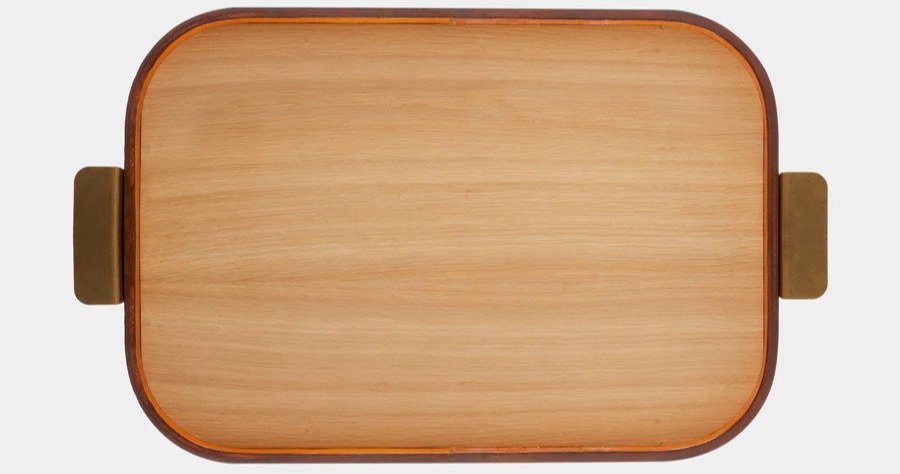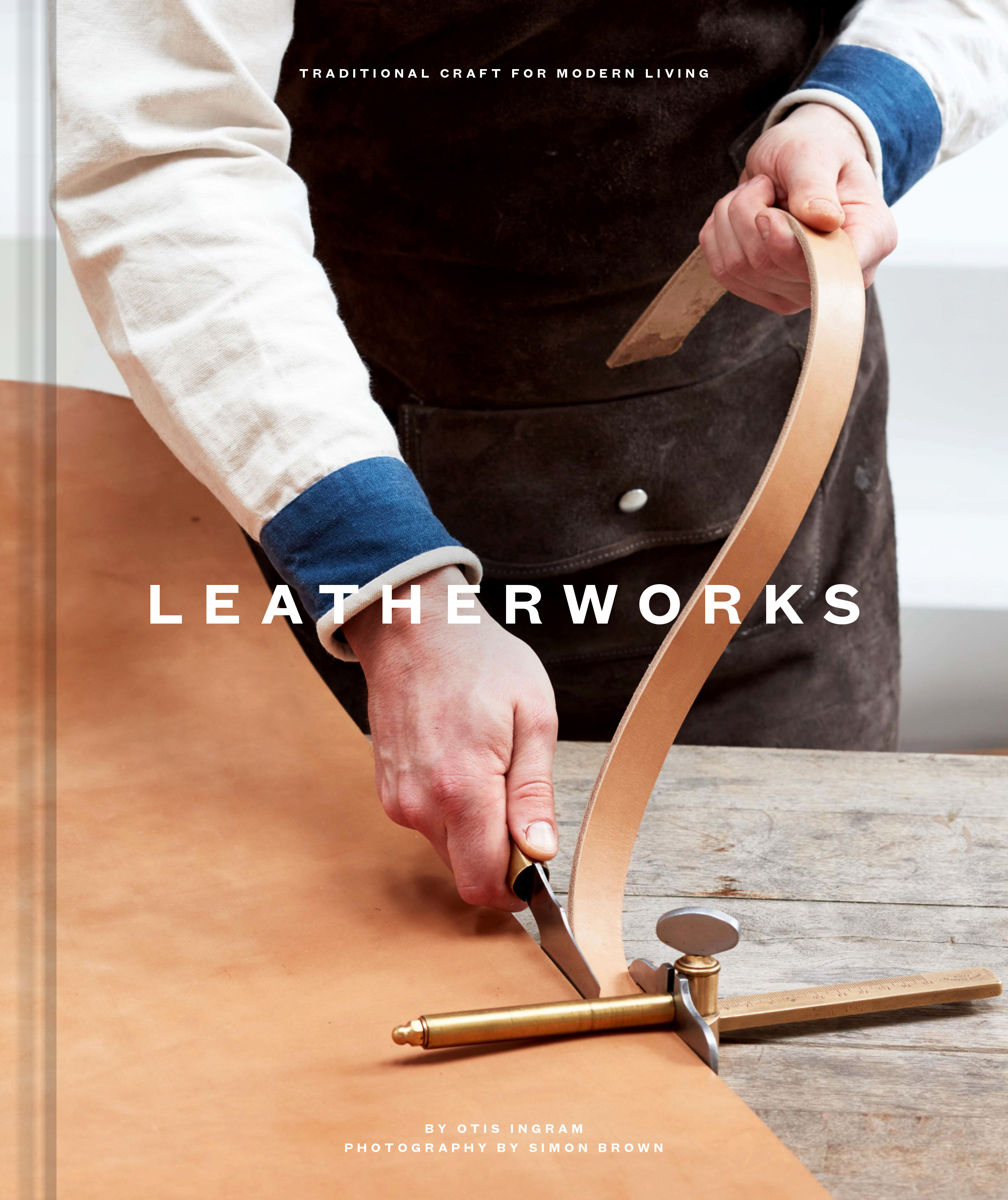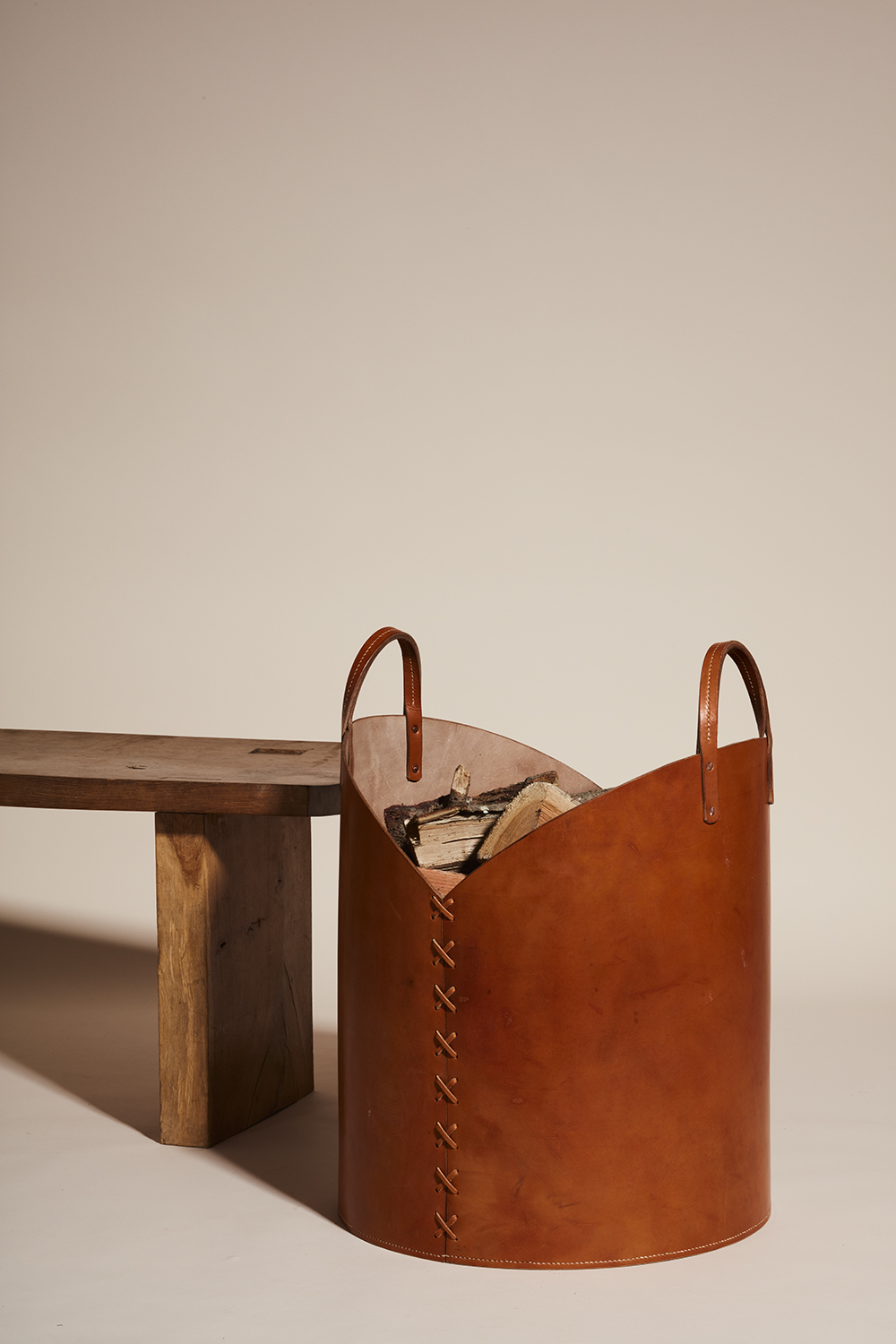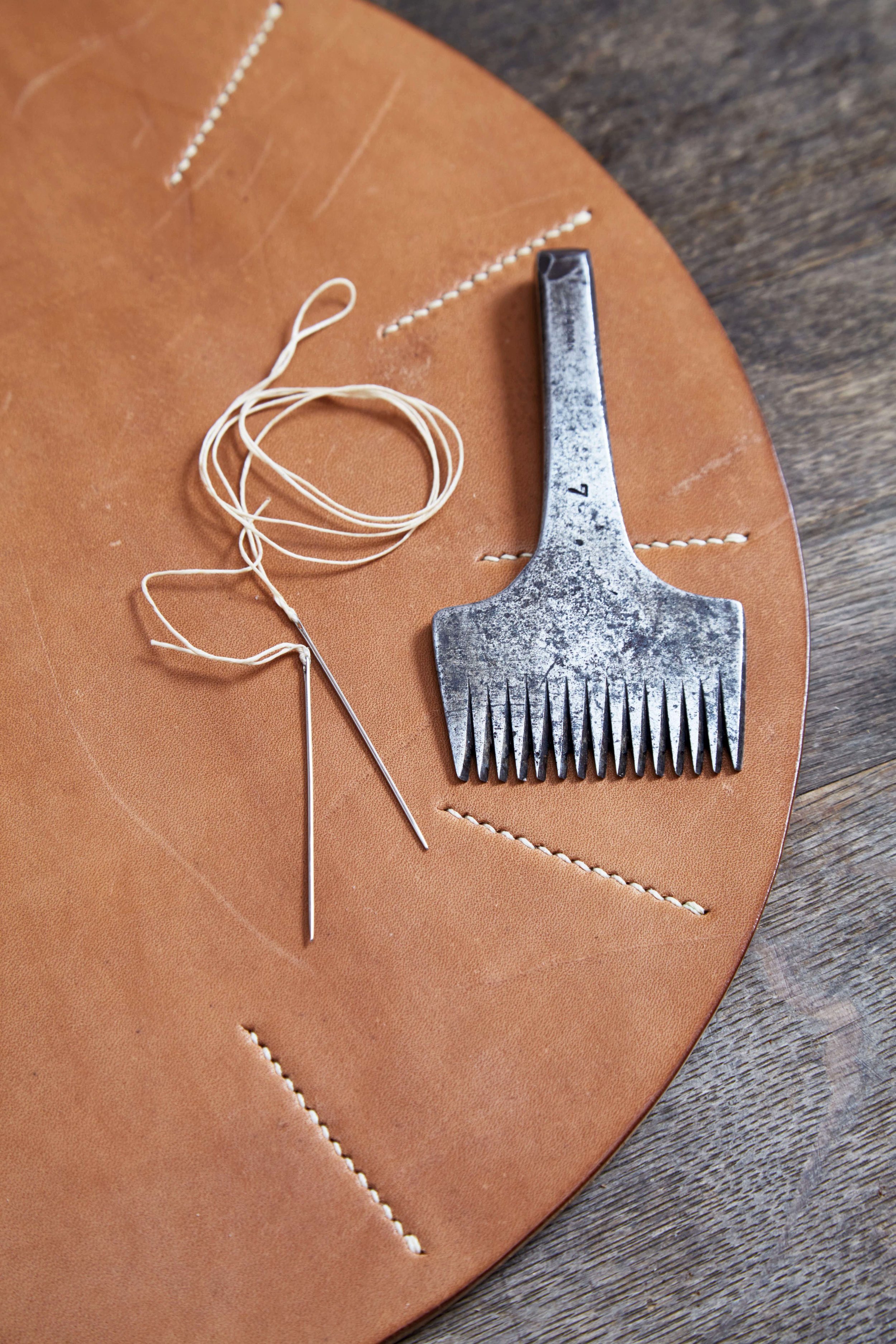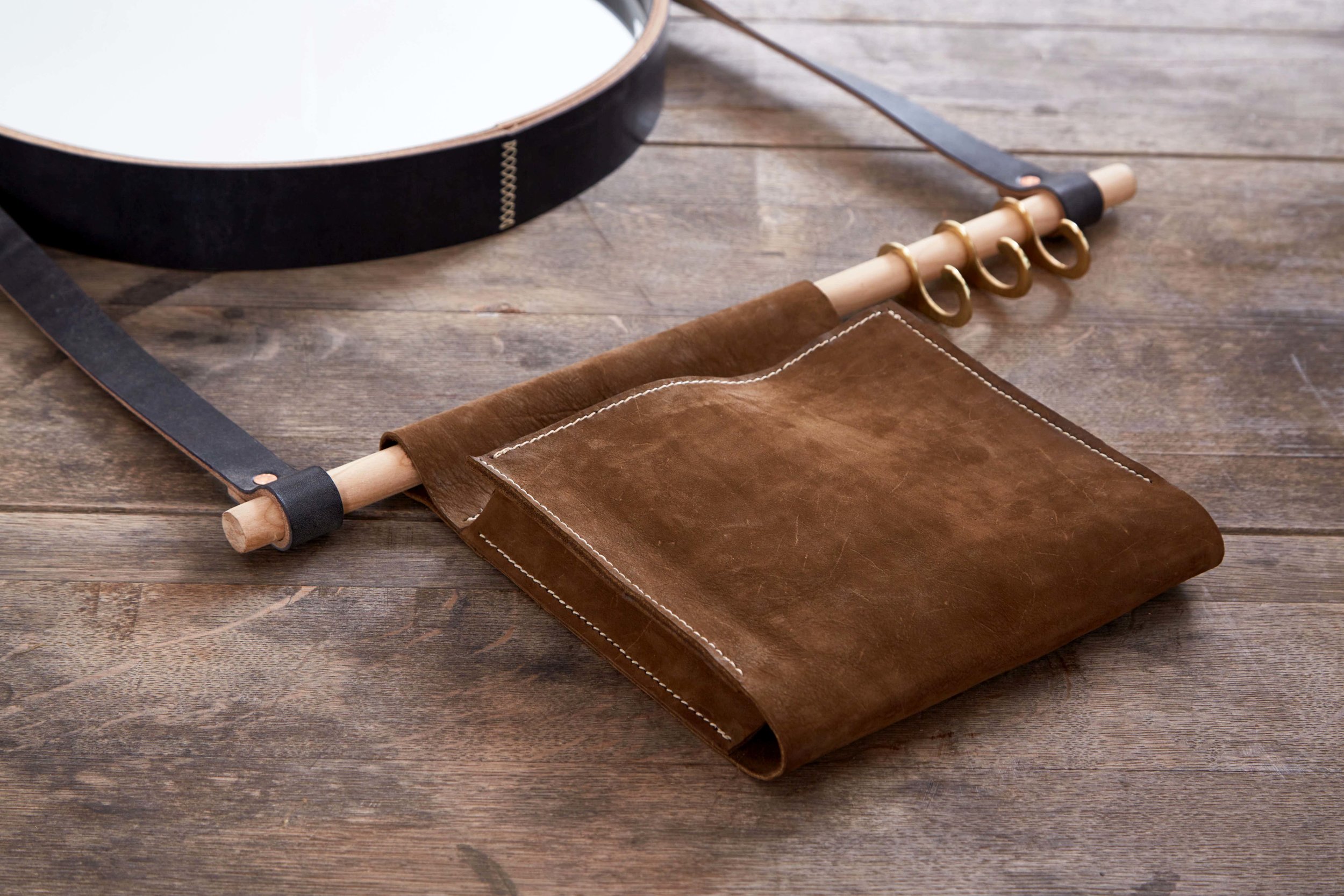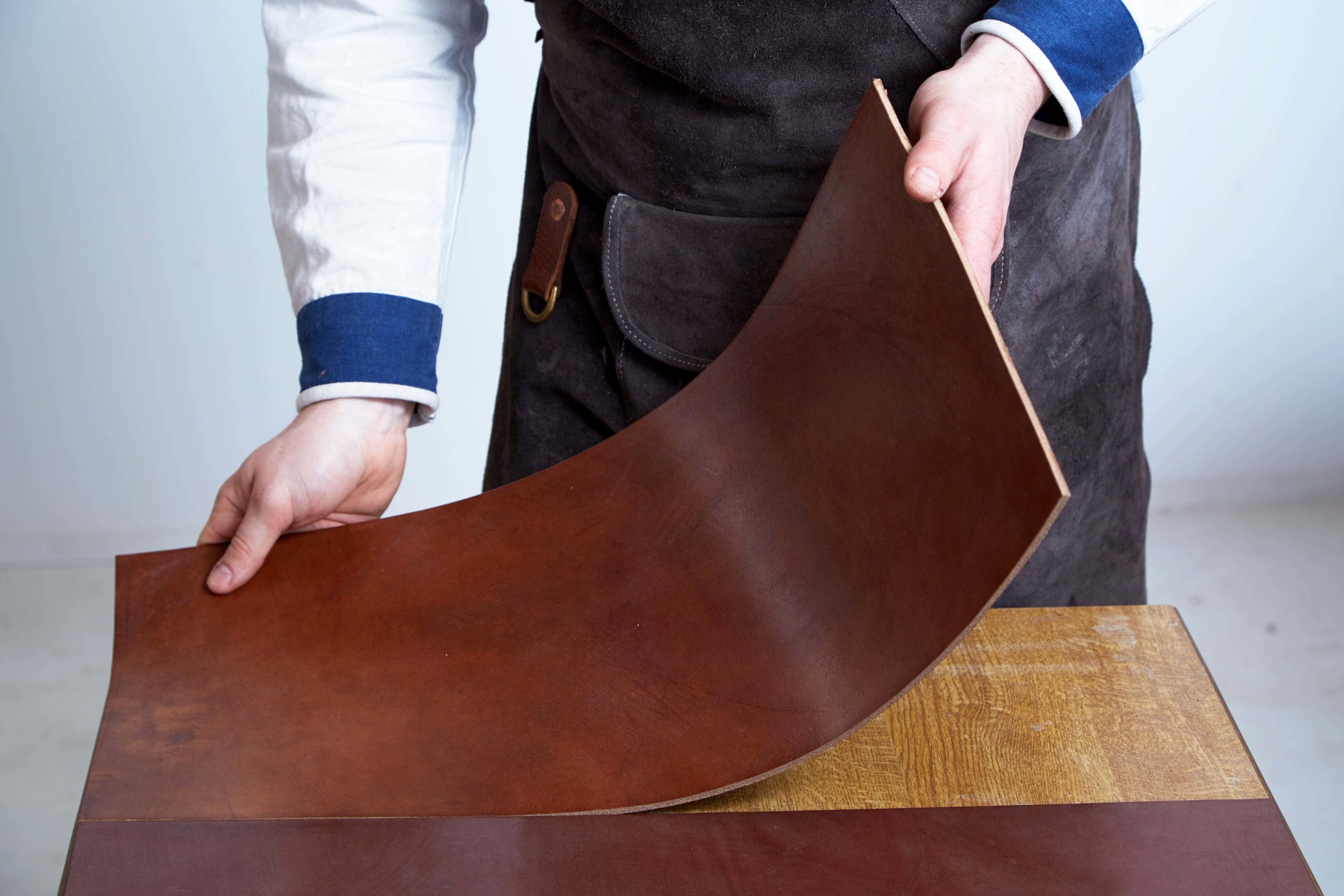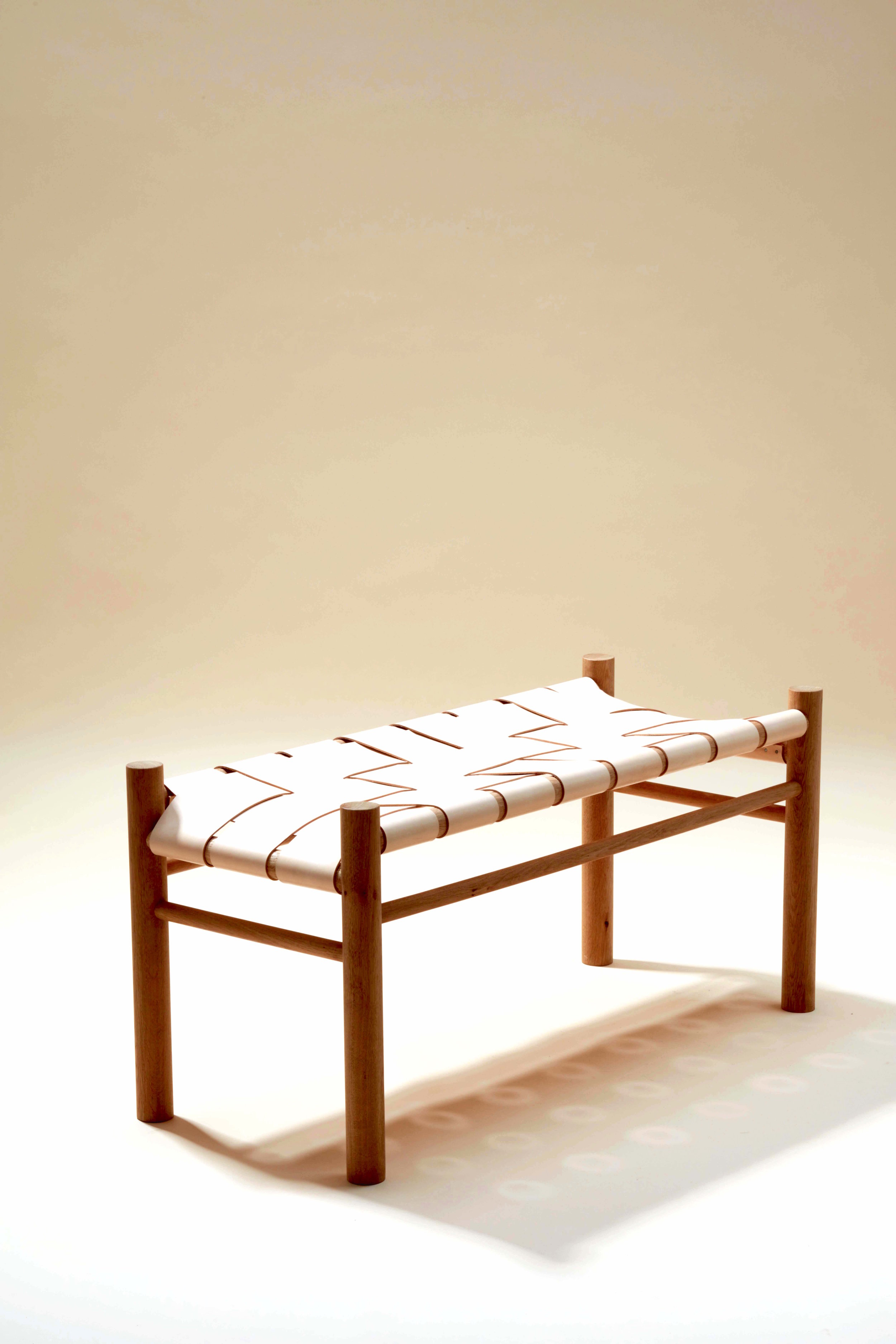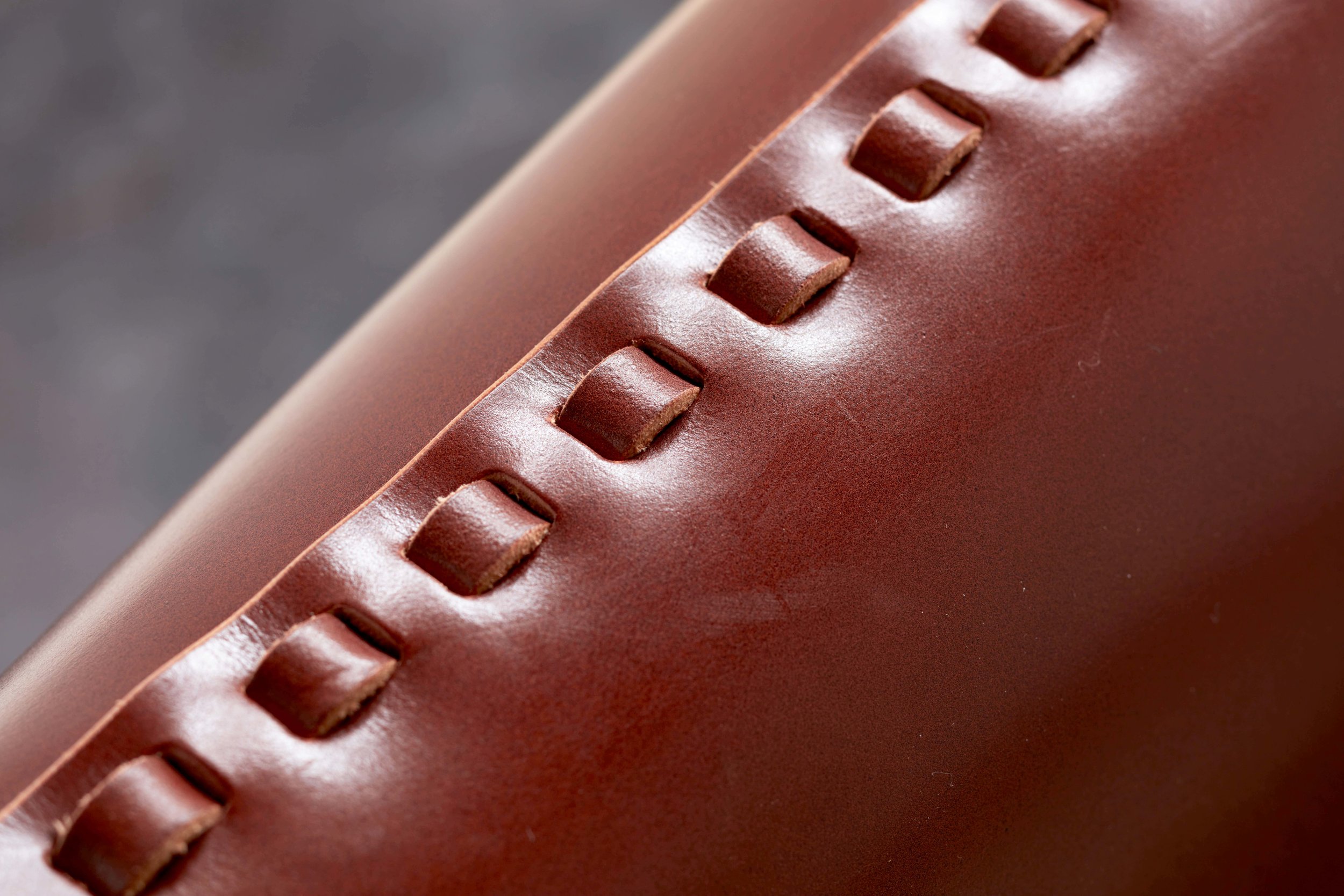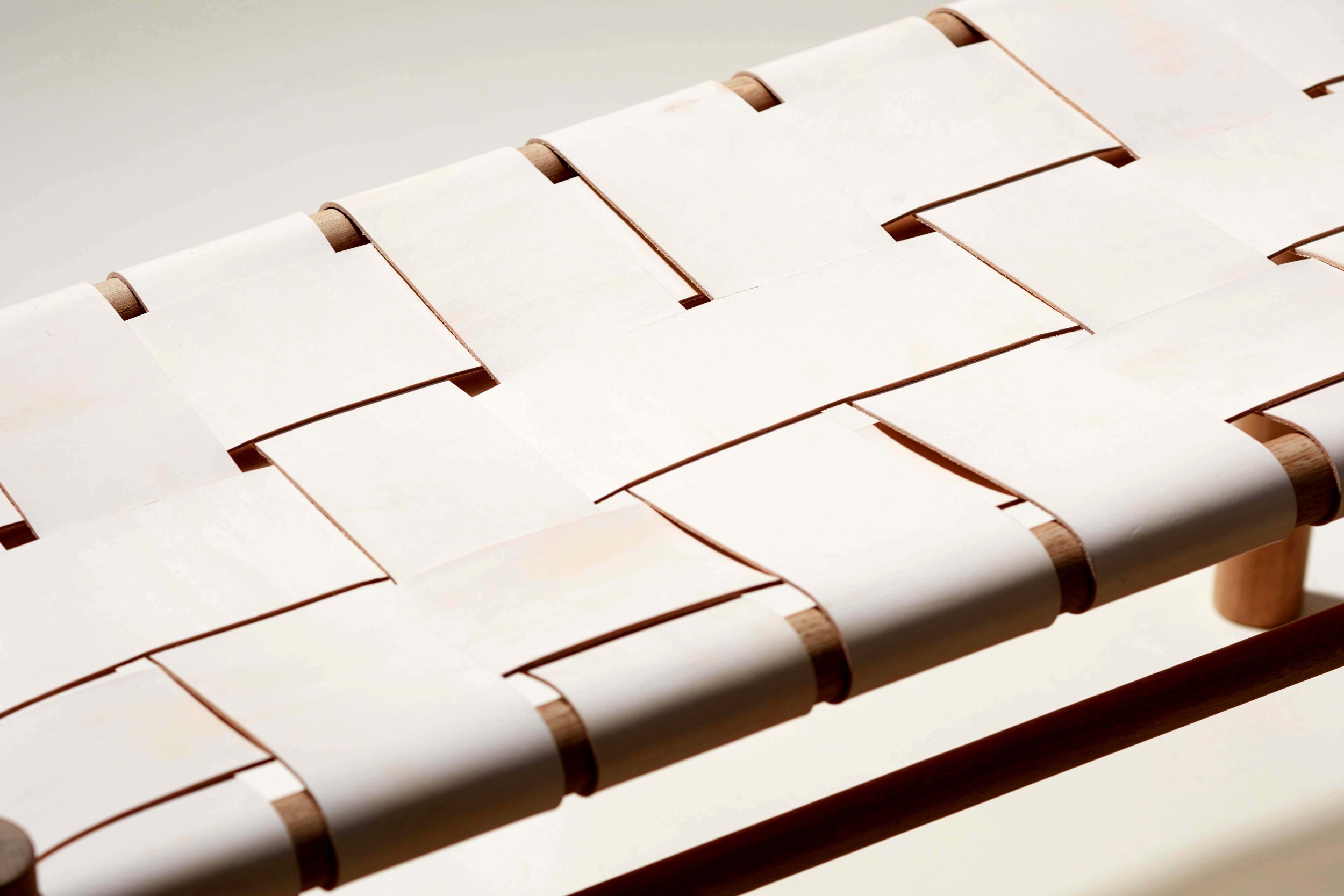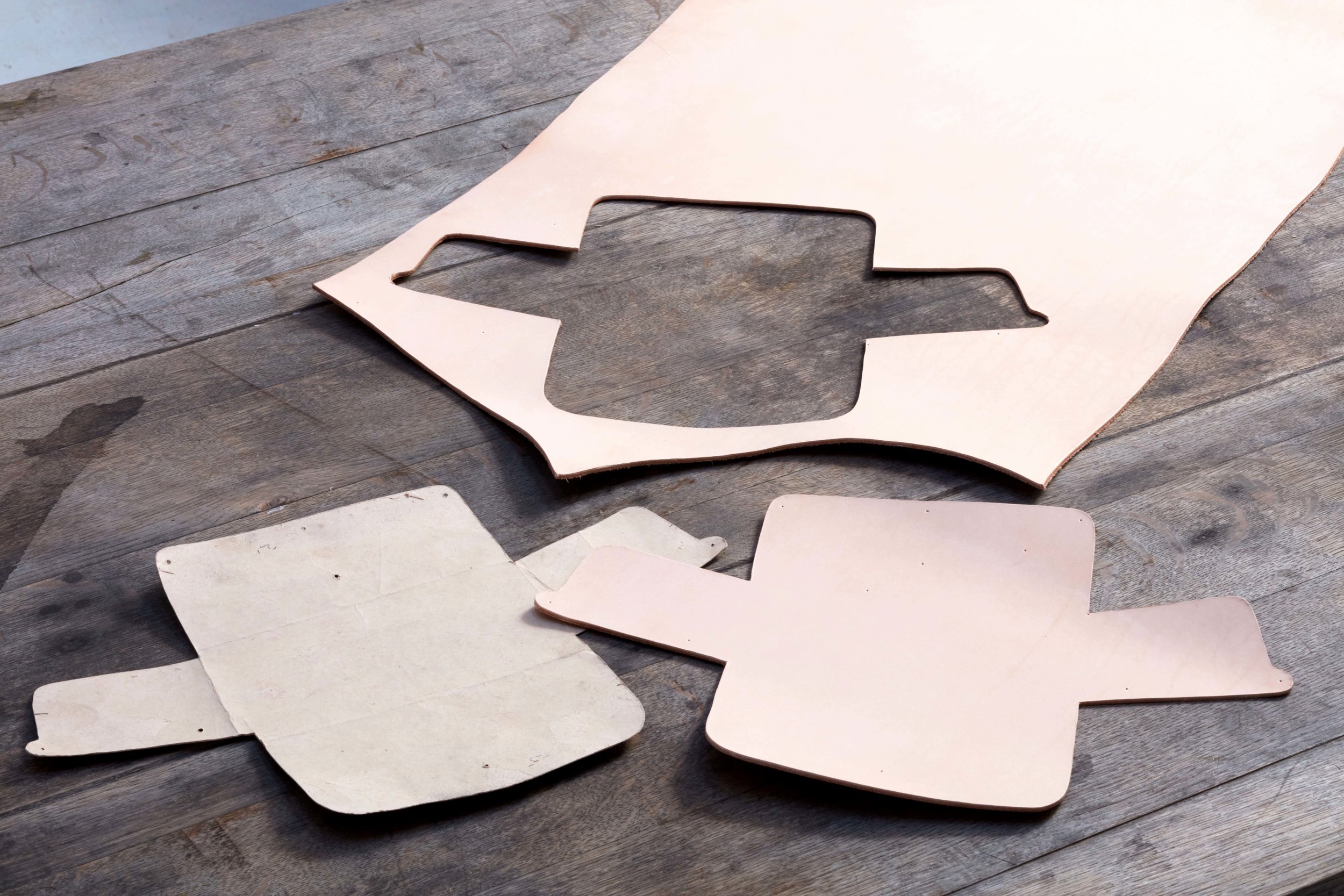OTZI was founded by Otis Ingrams in 2013. From a nomadic beginning across London, it has since settled in Norfolk, East Anglia. Working to individual briefs, Otzi promotes close working relationships with designers, interior designers, artists, makers and brands to create unique and functional pieces. The studio facilitates the making of both small and large quantities for private and commercial projects around a strong conviction that individual and batch produced products both demand an equal level of design and craft. At its core is a belief in functional, timeless design that showcases honest and beautiful materials. Referencing classic Bauhaus sensibilities and midcentury aesthetics, we only use the highest quality leathers and characterful native hardwoods. We create objects with integrity, durability and purpose that are made to age gracefully, as they withstand and reward the rigours of daily use.
Everything we make will improve over time, as the unique patina of its life emerges, reflecting the character of the owner. Full grain, vegetable tanned and aniline leathers wear elegantly and well, burnishing in spots of frequent wear and developing an antiqued lived in feel that becomes part of the piece; elevating it rather than diminishing it. We maintain and develop traditional craft practices such as hand stitching, cutting and finishing, promoting the training of apprentices to keep leatherwork thriving in the UK
M A T E R I A L S
Otzi is committed to sourcing the finest leathers and materials, predominantly natural materials that are regenerative or a by product from other industries. We believe that in using the best materials available, not only do the pieces realise their full potential aesthetically, they also function better and longer. Our pieces are hand-crafted and take hours of patient work to achieve, and are a real investment for our clients. With this in mind we feel that the materials should only be the best in order to reflect the quality of our workmanship and to give the piece the longest lifespan possible.
L E A T H E R
We employ predominantly pit and vegetable tanned leather, from the UK and Europe. Pit tanning has been practiced in Europe and the UK for hundreds of years and is only used by a handful of remaining tanneries. It produces a superior leather with great tensile strength and durability, whilst keeping the beauty of the full grain on the surface. It involves grinding the bark from either oak or chestnut trees and creating a liquor, much like a tea. The hides are soaked in liquors of increasing strength for 3 months before being layered amongst scattered bark powder for 9 months. After this lengthy process they are soaked in greases and fat liquors before drying, hand dying, and finished with dubbin. All of these waxes, tallows, and fats are totally natural. The fact that the tree bark, leather hide itself and the tanning and currying materials are all byproducts from the timber and meat industry makes this leather some of the most environmentally friendly and sustainable available today.
We have a strong relationship with Britain's last remaining oak bark tannery, J & F J Baker, https://www.jfjbaker.co.uk/, in Devon. Their oak bark tanned bridle leather is amongst the strongest and most sustainably produced leather anywhere in the world, taking hides from nearby pasture-fed cows and creating an incredible material almost entirely processed by hand.
Each piece of leather we use is carefully graded and selected to ensure the utmost quality and finish. Still, minute blemishes and imperfections are unavoidable. We believe these are qualities to be enhanced and celebrated, and make a virtue of showcasing the natural characteristics of the material, with any growth marks or scarring placed thoughtfully into our pieces rather than removed. It is these that give each piece its unique quality and character. The leathers are often finished with natural oils, tallows and waxes that are applied by hand to give the leather its strength. Traditional European vegetable tanned leather uses many of the same processes as the oak bark tanning but on a shorter timeframe. It is still a very sustainable material and much of the character and strength is maintained in the leather. Vegetable tanned leather is usually aniline dyed, unfinished, and therefore quick to impression and mark however these marks can be buffed out. Over time they will balance out alongside other markings that become part of the wear of the piece.
We don’t use heavily pigmented or even semi aniline leathers that will appear cleaner and more pristine for longer; however this come at a cost of finish, natural character and wear and those leathers tend to age poorly. All of our pieces are made to endure; we want them to look great in ten, twenty and even thirty years from when they are made. We therefore use olive tanned leathers for our upholstery, which is a new method of tanning hides. It is incredibly sustainable as it uses leaves taken as a byproduct from the olive industry, which are usually burned. The hides that result are warm and gentle to the touch and can be produced in a range of colours and finishes.
-
All of the timber we use for our furniture is sourced locally from East Anglia and the South East of the UK. We work with local forest management to take timber from trees that have been either storm felled or taken down for development purposes. We work with most native timbers such as ash, oak, sycamore, elm, chestnut, beech and plane. Where they don’t impede structural integrity, we choose to keep the imperfections in the timber, utilising the amazing grain and striking character wherever possible.
Ultimately, we are guided by our belief that natural and sustainable materials have intrinsic value and idiosyncratic characteristics that synthetic materials cannot produce. Coupled with timeless design, they produce objects and pieces that will, with careful use, last and improve over a lifetime.
-
We upholster our pieces in linen for a variety of reasons. Visually it has a lovely uneven slubby texture that suits our aesthetic. It also ages very well, getting softer with age and has a durability and toughness in keeping with the leathers and timbers we make our pieces from. As with our other core materials, linen is an inherently sustainable fabric that uses less water than cottons and can be planted in poorer quality soils.
S T O R Y
Otis Ingrams began working with leather while at university. The studio was born out of a need to work with hands to create work with a permanence and durability as opposed to the disposability of so many of today's items. Otis wanted to make functional yet beautiful pieces that can withstand the rigours of regular use.
Drawn towards leather as a core materials; the feel and handle of the material and the sheer breadth of design applications it has, he began making small leathergoods and bespoke leatherwork for interiors. After realising its potential and the possibilities it has, he published in 2017; 'Leatherworks' a craft book offering a step-by-step guide to the basics. Since then, he’s has developed a range of interior leather objects and hardwood furniture.
Otis is now supported by a dedicated team of highly trained craftspeople, who have all received one on one training from Otis as well as by teaching from members of the Saddler’s and Leatherseller’s Guilds.





